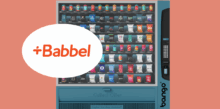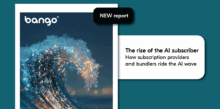🧩 From DTC to bundles: cracking the subscriber migration puzzle
by Ben Caveen | 30 May 2025
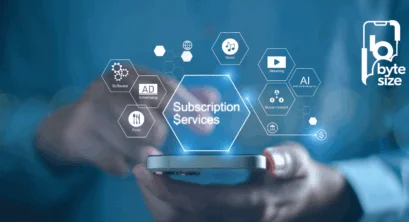
“But I already have a subscription.”
“Will I lose my playlist or profile?”
“Can I take this better offer – or do I have to cancel first?”
Sound familiar?
These are the exact questions consumers ask when switching from a direct-to-consumer (DTC) subscription to a bundled offer via their telco, ISP or other provider. And if the migration journey doesn’t feel seamless, those subscribers often drop off before they make the leap.
In our latest Bango Bytesize session, yesterday (May 29), we dug into what really happens when subscription providers and resellers migrate users into bundles and what it takes to get it right.
Watch this recording and all other Bytesize content here.
Understanding the subscriber migration challenge
As subscription services proliferate, consumers often find themselves juggling multiple subscriptions across various platforms. This fragmentation can lead to confusion and frustration, as many subscribers struggle to keep track of their spending and the services they are using. In our recent Subscriptions Assemble report published in March, the data indicates that a third of US subscriber are unaware of how much they are spending on subscriptions, with some even paying for services they no longer use – coined as “vampire subscriptions.”

To address these challenges, resellers and content provider must consider better collaboration efforts to streamline the migration of existing subscribers from DTC models to bundled offerings. This transition is not merely a technical challenge; it requires a deep understanding of customer needs and preferences. The goal is to create a seamless experience that enhances customer satisfaction while also driving revenue growth.
The good, the bad, and the ugly of subscriber migration
During the webinar, Graeme Wafer, Business Analyst at Bango and our expert panellist, shared valuable insights into the different pathways that subscribers may encounter during the migration process. These pathways can be categorized into three distinct experiences: the good, the bad, and the ugly.
The good path: a seamless experience
The ideal scenario for subscriber migration is what Graeme referred to as the “good path.” In this case, the process is straightforward and user-friendly. For example, Graeme shared his personal experience of signing up for Netflix through his EE plan. The process involved just a few simple steps: logging into his account, selecting Netflix as an add-on, and confirming the switch. He was able to retain his existing profiles and watchlists, making the transition smooth and hassle-free.
This positive experience highlights the importance of a well-designed migration process. When subscribers can easily switch their payment methods and retain their existing accounts, they are more likely to embrace bundled offerings. This not only enhances customer satisfaction but also fosters loyalty, as subscribers feel valued and understood.
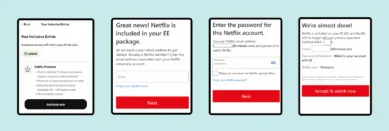
The bad path: frustration and confusion
Unfortunately, not all migration experiences are positive. We discussed the “bad path,” where subscribers encounter obstacles that hinder their ability to switch to bundled offerings. Common issues include unclear error messages, blocked accounts and complicated navigation processes. For instance, if a subscriber attempts to sign up for a bundle but is met with a message stating that they are ineligible due to an existing account, it can lead to frustration and confusion.
These negative experiences can deter subscribers from pursuing bundled offerings altogether. If customers feel blocked or misinformed, they may abandon the process and seek alternatives. This not only impacts customer satisfaction but can also damage the reputation of the brands involved.
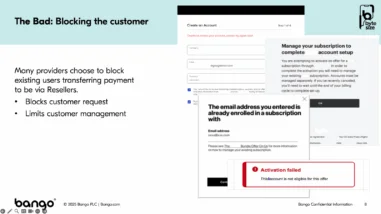
The ugly path: dual billing and account restrictions
We also touched on the “ugly path,” which represents the most detrimental scenarios for subscribers. One example discussed was dual billing, where a subscriber is charged by both the content provider and the reseller for the same service. This not only creates confusion but can also lead to customer complaints and dissatisfaction.
Another troubling scenario involves content providers that restrict subscribers from reactivating their accounts through different resellers. In such cases, customers may be forced to create new email addresses to sign up again, resulting in the loss of their existing profiles and preferences. This inflexibility can alienate customers and discourage them from engaging with the brand in the future.
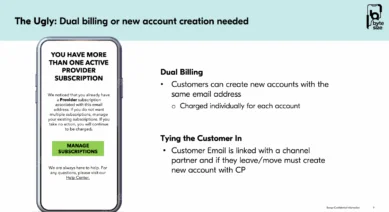
The power of Super Bundling powered by the Digital Vending Machine®
To address the challenges associated with subscriber migration, businesses must consider the concept of Super Bundling. This approach allows subscribers to manage multiple services through a single platform, providing them with greater flexibility and control over their subscriptions. Our research indicates that a significant majority of subscribers (63%) desire a unified platform to manage their services, highlighting the demand for streamlined solutions.
Super Bundling not only simplifies the customer experience but also enhances the value proposition for both resellers and content providers. By offering bundled services, businesses can attract new customers while retaining existing ones. This approach aligns with the growing trend of consumers seeking personalized and customizable subscription options.
Best practices for successful subscriber migration
Based on the insights shared during the webinar, here are some best practices for businesses looking to optimize their subscriber migration strategies:
- Prioritize customer experience: Ensure that the migration process is user-friendly and intuitive. Minimize the number of steps required for subscribers to switch to bundled offerings and provide clear instructions throughout the process.
- Communicate clearly: Avoid ambiguous error messages and provide subscribers with clear information about their options. If a customer encounters an issue, offer specific guidance on how to resolve it.
- Leverage existing technology and expertise: Utilize advanced technologies, such as the Digital Vending Machine® (DVM™️), to facilitate seamless transitions between DTC and bundled offerings. This can help streamline the migration process and reduce the burden on both subscribers and resellers.
- Gather feedback: Continuously collect feedback from subscribers to identify pain points and areas for improvement. Use this information to refine the migration process and enhance the overall customer experience.
- Educate subscribers: Provide resources and support to help subscribers understand the benefits of bundled offerings. This can include tutorials, FAQs and customer support channels to address any questions or concerns.
Case study: A partner activation flow for an existing subscription
Graeme discussed during the webinar how Bango expertise significantly improved the customer experience activation flow for one of our partners. Initially, the partner faced challenges with a cumbersome migration process that involved multiple steps and confusing error messages. Customers would start at the reseller’s site, find an attractive offer, and then be redirected to the content provider’s page. However, this journey was fraught with obstacles, including unnecessary redirections and error messages that left customers feeling frustrated and confused.
Bango stepped in to help streamline this process by leveraging our deep understanding of how 200+ partners interact with the DVM and know the needs of both resellers and content providers. We collaborated closely with the partner to redesign the activation flow, simplifying it to just a few steps. Instead of navigating through a series of error messages and redirects, customers could now log in to their existing accounts and seamlessly switch to the new plan with a single confirmation. This not only reduced the activation time but also ensured that customers retained their profiles and preferences, leading to a much more satisfying experience. As a result, the partner saw a significant increase in subscriber engagement and satisfaction, demonstrating the power of a well-optimized migration process.
Conclusion
The transition from direct-to-consumer models to bundled offerings presents both challenges and opportunities for businesses in the subscription space. By prioritizing customer experience, leveraging technology and embracing the concept of Super Bundling, businesses can create a seamless migration process that enhances customer satisfaction and drives growth.
As the subscription landscape continues to evolve, businesses must remain agile and responsive to the needs of their customers. By adopting best practices and focusing on delivering value, companies can successfully navigate the subscriber migration puzzle and thrive in this competitive market.
Subscribe to our newsletter
Get the latest subscription bundling news and insights delivered straight to your inbox.


